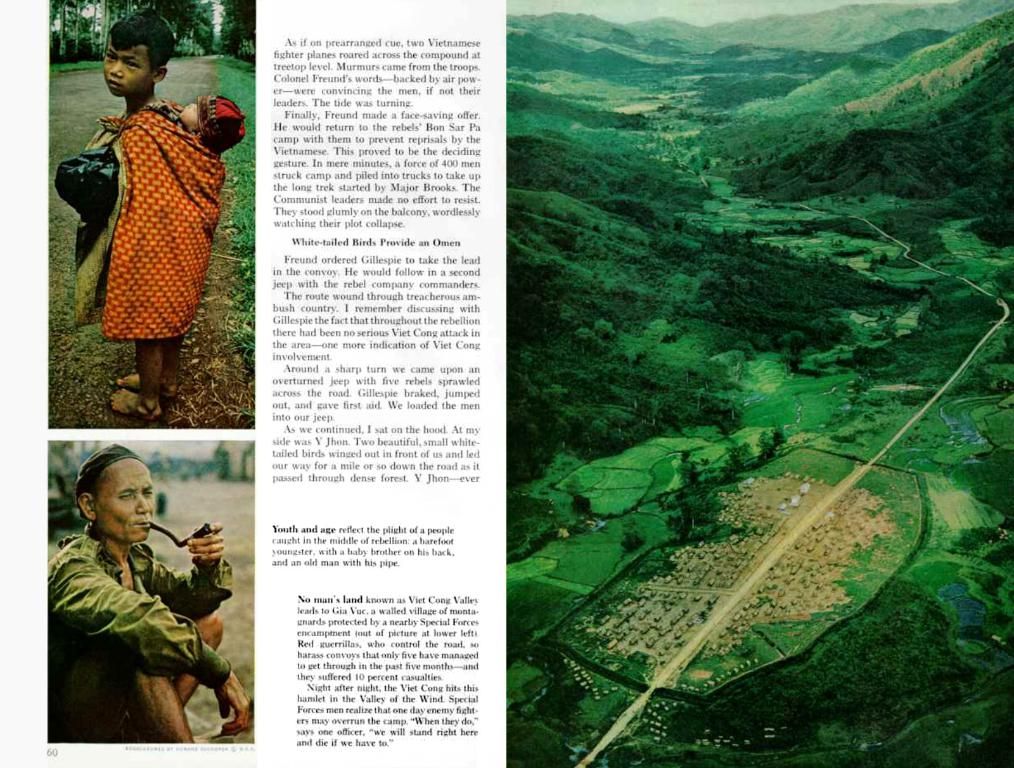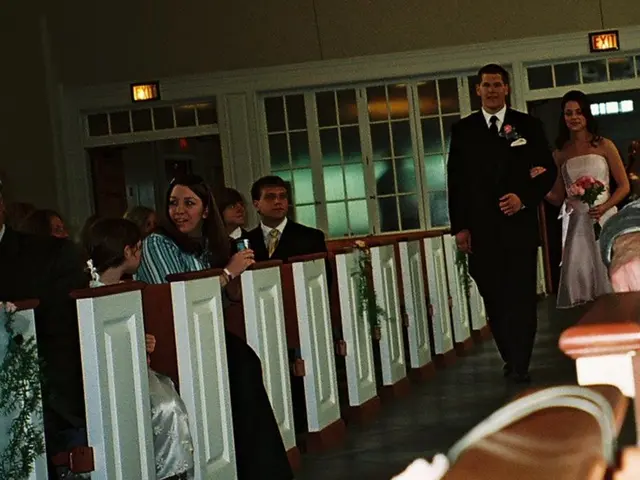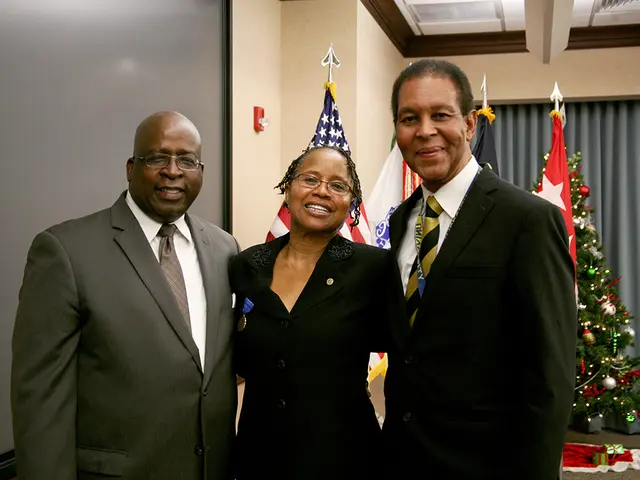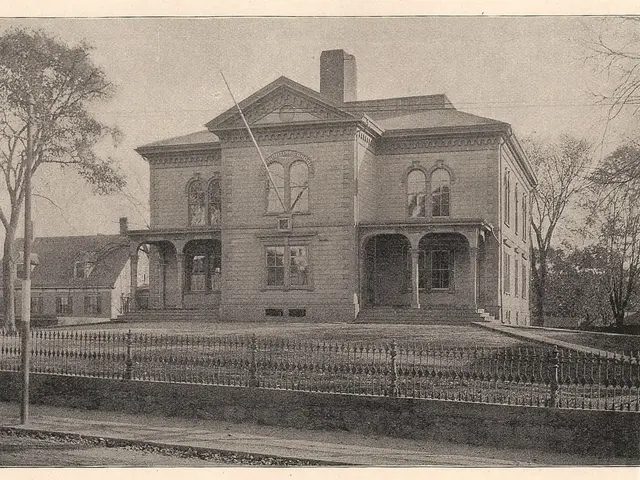Crafting Costumes for Pandora: Delving into the wardrobe of 'Avatar: The Way of Water' with Deborah L. Scott
New Article:
Interview: Costume Designer Deborah Scott on Bringing Avatar: The Way of Water to Life
Spencer Williams here, diving into the world of Avatar: The Way of Water with none other than the legendary costume designer, Deborah Scott. Known for her work on Titanic, Back To The Future, and E.T. the Extra-Terrestrial, Scott masterminded the costume designs for the Na'vi as well as the human invaders in this box-office juggernaut. I had the absolute pleasure of speaking with the Academy Award-winning designer to delve into her process and the magic behind bringing Pandora to life.
Spencer Williams: Welcome, Deborah! I'm a massive fan, so try not to cringe too much as I geek out over this incredible film...
Deborah Scott: Oh, come on! You can't help but be invested if you're here. So, go ahead and share your nerdiness with me!
Spencer Williams: Congrats on your CDGA nomination in the Excellence in Sci-Fi Fantasy Film category! Also, I heard about your Career Achievement Award. Must feel amazing!
Deborah Scott: It's pretty awe-inspiring. You don't think about it while you're in the thick of your career. Then all of a sudden, you realize your peers are honoring you! It's like a rush of gratitude. The nomination is pretty cool. Hopefully, we can nab that win!
Spencer Williams: It's a very tough category this year, but I've no doubt your work is unparalleled. On that note, you've been working on this film for years! I was a teenager when the original came out. How long have you been working on Avatar: The Way of Water?
Deborah Scott: I started back in the spring of 2018. It's been a long haul because films two and three were interconnected. Jim wanted to shoot them in order for a more comprehensive storyline. I was on hiatus for a bit, but it was probably five and a half, six years for both films combined.
Spencer Williams: That's insane! I'd imagine that has to be exhausting. For most costume designers, a film might take a few months—this has been a major part of your life!
Deborah Scott: It's interesting to work on something for that long distance. Most of us work on a project for maybe six months. We also dealt with COVID in the mix. The post-production of Avatar: The Way of Water took a long time. Jim is very invested, and he kept me on through the whole shebang. During post-production, not only because I was continuing my work on the third film but because they needed someone to shepherd the process through the whole effects process.
Spencer Williams: Standout Moment: Visual Effects RoleI'd argue that Costume Designers are absolutely essential in a film like Avatar: The Way of Water. People might think, "What's the role of a costume designer in an animated film like this?" But the reality is, visual effects play a huge part, so without a costume designer, it wouldn't even be possible. Deborah explains, "It's essential because who else is going to do that job? We are basically the visual representations of these characters. That task lies with us."
Deborah Scott: Exactly! The visual effects are incredibly important. The public sees this film in an animated format, but that doesn't mean that the same amount of work went into creating the characters, the world, and both the Omatikaya and Metkayina clans. Without the costume designer, there would be no characters to animate because the props, masks, and breathing masks are also designed by the costume department.
Spencer Williams: In-Depth: The Design ProcessOur conversation then shifted to the technical aspects of the process. Thinking about all the things I marveled at while watching Avatar: The Way of Water made me wonder—what exactly does a costume designer's role look like in this process? Deborah shared:
- We start with designing on paper, and if it's approved, we make the garments.
- They're made to a human scale so that the actors can see how they fit.
- Then, we send them to the digital artists for recreation.
- We hold virtual fittings with them, back and forth, tailoring the costume to fit the characters, understanding their movement, and what they're made of.
Spencer Williams: Underwater ChallengeAnother aspect I found fascinating was how the underwater sequences factored into the film:
Deborah Scott: Yes! The movement of a garment is always important in an animated film. There are so many technical challenges to overcome, especially in a film like this. We had to figure out how to make the performance capture suits work underwater—something that had never been done before. It took about eight months to figure it out.
Ultimately, we landed on a silver suit because it was visible underwater and didn't interfere with the actor's movements. We had to account for the color changes that occur underwater, too.
Spencer Williams: Mind-Blowing Revelation: Tailored to the CharacterI was blown away by the extent of Deborah's responsibilities. Beyond costumes, she even designed the characters' hair! I had to express my shock: "You designed the hair? Are you kidding me?"
Deborah Scott: Oh yeah! It was great because you can conceptualize a full look with a head and face. It's essential to be able to do these drawings from head to toe. Concept art really influences the digital artist.
Spencer Williams: It's mind-blowing, honestly!
Deborah Scott: I know! The comparison I make for students of costume design is that these are the new frontiers that are leading you into a different form of the craft. You need to learn all these new skills and have a seat at the table of these movies.
Spencer Williams: Being aware of lighting, gravity, and physics is something far beyond sewing!
Deborah Scott: That's right. That challenge is exhilarating. The public will start to see more films made in this way, so it's essential that costume designers learn these new skills.
Spencer Williams: Reflection on the Metkayina ClanI was curious about how Deborah's research process influenced the varying clans and the incorporation of different cultural influences:
Deborah Scott: We started with the first film as a jumping-off point for the Omatikaya, but we took it in new directions for the second film. We researched indigenous peoples all over the world who live near or on the water, from China to India to the Arctic. We ended up settling on the greater Polynesian area because of its warm climate.
The Metkayina clan is more colorful, and we used a palette based on the Pāua shell. The concept is based on the forest, water, and ocean. We developed specific rules and made sure the heads of the clans stood out, with their more minimal costumes showing their stature.
Spencer Williams: Stunning TextilesThe use of textiles in Avatar: The Way of Water was incredible. I was blown away by the combination of woven and braided materials and the abundance of shells. Deborah shared her insights:
Deborah Scott: Our characters use hides, reptiles, birds, shells, and plants. If it's available in the fantastical environment, we can use it. Jim always returns to the natural world. The shells we use, for example, are real shells.
For Neytiri's bone collar, the bone part was 3D printed. It was a challenge to make it fearsome and delicate. It took many designs, but we finally achieved the desired balance.
Spencer Williams: The Use of ColorIt's clear that color played a significant role in the film. Deborah explained her process:
Deborah Scott: I stuck with the concept of the forest, water, and ocean. The Metkayina are more colorful in their way. I used a palette based on the Pāua shell and the colors of a sunset on a beach. That's where you get these beautiful oranges, yellows, peaches, and pinks.
Spencer Williams: One of My Favorite Parts: Textiles and ColorsI've always found the use of textiles and color to be soothing and calming in these films. It was lovely to discuss this aspect with Deborah:
Deborah Scott: I'm glad you felt that way. That's what we want, to draw the audience in and make them feel what we felt while creating it.
Spencer: Live-Action CostumesOf course, it's important not to forget the live-action world, with its soldiers, scientists, and Edie Falco as General Ardmore. Deborah discussed the challenge of designing these costumes:
Deborah Scott: We had to ensure they felt realistic since Jim isn't a big fan of science fiction. We strive to make everything feel real to the audience. We worked with my associate designer for the live-action portion in New Zealand, Bob Buck. We had to develop the medical world, which retains some similarities to the first film but goes even further.
We also had to adapt the live-action costumes for the nine-foot-tall, blue Na'vi. It took a lot of experimentation to make them work.
Spencer Williams: Collaboration with the CastCollaborating with actors to bring their characters to life is crucial, even when it comes to performance capture. Deborah shared her experience:
Deborah Scott: We didn't want to lose that part of the process because they were never going to wear their costumes during filming. For example, when Kate was cast, we showed her artwork. Jim showed her our world. Then we gave her pieces like the neckpiece with the shells, allowing her to touch, look, and absorb the concept.
Spencer Williams: Remembering Titanic and Collaborating with James CameronI couldn't resist asking Deborah about her long-standing partnership with James Cameron:
Deborah Scott: You need to have a dialogue with your director and understand what they're going to ask of you. Our time together has been in different chunks over twenty, twenty-five years. Jim works at an extremely high level, with a precise and demanding nature.
It means a huge amount professionally. Breaking new ground, the challenge is immense and wonderful. It constantly keeps your brain, in a creative sense, stimulated.
Spencer Williams: Legacy and ImpactAs the interview reached its end, I couldn't help but wonder about the lasting impact of Avatar: The Way of Water and what this experience meant to Deborah personally and professionally:
Deborah Scott: Personally, it's meant retreating into a fantasy world and letting my creative inklings go. It's rare to have an experience like this with the freedom to walk through a different door and let the mind roam.
Professionally, it's been challenging and exciting to create a whole new world. I get every wild thought we had, and then learn to harness that creativity. I've worked with the most incredible team at Wētā Workshop. It's gratifying and a blast to work together and discover a new world.
Avatar: The Way of Water has undoubtedly left a lasting impact on the film industry, and I'm honored to have shared this experience with the brilliant Deborah Scott. Cannot wait to see what the next chapters hold for her and the Na'vi.
- The costume designer, Deborah Scott, spoke about her role in the animated film Avatar: The Way of Water, stating, "Without the costume designer, there would be no characters to animate because the props, masks, and breathing masks are also designed by the costume department."
- In the process of designing costumes for Avatar: The Way of Water, Deborah Scott also took on the task of designing the characters' hairstyles, stating, "It was great because you can conceptualize a full look with a head and face. It's essential to be able to do these drawings from head to toe."







